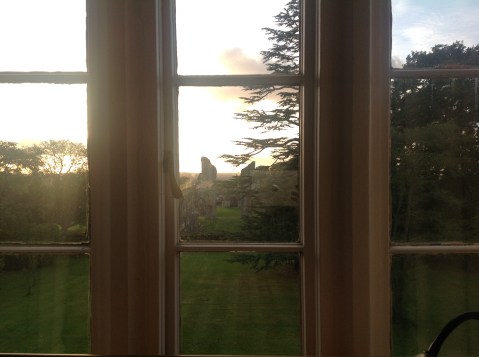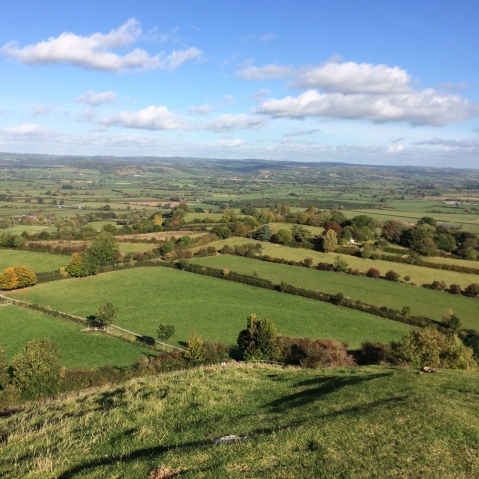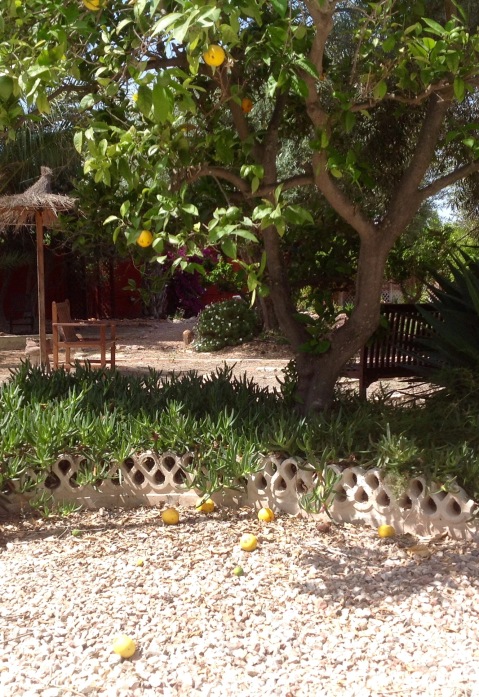Advent Watchfulness & Evangelical Inattentiveness
Advent watchfulness and Evangelical Inattentiveness…
Advent is a season of waiting and watchfulness. It is also an opportunity to examine what we are inattentive to as Christians. ‘Evangelical Inattentiveness’ is a phrase coined by Christopher Hall talking about our lack of engagement with ancient Christian voices.(1) I think we can find Evangelical inattentiveness in other areas as well, and the interesting question is why? In asking that question I am not looking to be judgemental, but to invite Evangelicals as a community to self-examination, a biblical concept for community not just individuals. The early contemplatives sought to replace judgemental attitudes with a clear seeing they called dioraris.(2) This is what I am looking to apply in this area of Evangelical inattentiveness.
I am aware that Evangelicals have been inattentive toward mental health and wellbeing. In my research into mindfulness of God and contemplation I also argue that Evangelicals are generally inattentive to attention and awareness and contemplative practices. This inattentiveness to formational practices has led to what Richard Lovelace calls a sanctification gap in the modern Protestant church.(3) Many contemplative practices are preserved within intentional Christian community, and again with a few notable exceptions in places like Lee Abbey and Scargill House, Evangelicals have often been inattentive to the power and witness of intentional Christian community. In all of the areas mentioned above there is a turn toward healthy engagement(4) but it is worth asking what is the inattentiveness about?
Ellen Langer who is a pioneer of research into mindfulness as a natural capacity separate from any meditative practices or religious roots started out by researching what she called ‘mindlessness.’ She defines mindlessness as, ‘characterized by an entrapment in old categories; by automatic behaviour that precludes attending to new signals; and by action that operates from a single perspective.’(5) My experience suggests that at times some Evangelicals find it difficult to be open to new ways of thinking. Often suspicion towards mindfulness or contemplative practices or meditation seems to be an automatic reaction rather than a considered response. I have also met Evangelicals who think there is only one point of view on some of these issues, it is their point of view and it must, therefore, be right!
For Ellen Langer, the primary mindful awareness practice is the ordinary capacity of noticing. She uses her concept of mindlessness to help her define her version of mindfulness: ‘A mindful approach to any activity has three categories; the continuous creation of new categories; openness to new information; and an implicit awareness of more than one perspective.’(6) This seems to me to be an approach that should resonate with an Evangelical approach to engaging with culture whilst being rooted in scriptural wisdom and practice as we seek to recontextualise the Gospel afresh in each new generation and in every culture.
Why else might we be inattentive? Hall says we are inattentive when we perceive something to be irrelevant and unimportant.(7) Certainly I have had conversations about attention and awareness, intentional Christian community, mental health where my arguments for the importance of engaging with these areas is dismissed, because the person I am talking to cannot see the relevance or importance these ideas. They are automatically dismissed. As human beings we make judgements all the time, and Hall says that if we think something is wrong, we dismiss it and stop listening.(8) Again I think Evangelicals are not only often seen as judgmental, they often are judgemental – and not listening goes with that attitude.
The theme of this year’s Mental Health Awareness Week was on body image. There is a lot of helpful information out there addressing this issue. Again my research would suggest that Evangelicals have been inattentive to the body. The Gnostic heresy that the spirit is good and the body bad is still alive and well in the church. Many people have been taught a disembodied spirituality and struggle with accessing the fullness of spiritual life which is embodied. The activist spirituality that dominates Evangelicalism also means we don’t pay attention to the messages our body sends us and we risk burnout and breakdown, often running on empty. James K. A. Smith critiques the church from a philosophical perspective and says that Christians have over-emphasized information and the cognitive, ‘In other words, we imagine human beings as giant bubble-headed dolls; with humungous heads and itty-bitty, unimportant bodies.’(9) He argues for a more holistic, integrated anthropology that incorporates body and desires, not just our minds. If we can address this theologically then we can create a healthier relationship with our bodies and desires.
It is not just the church our culture also must carry responsibility for how we relate to our bodies. From a mindfulness perspective which advocates working with our bodies and emotions, Professor Mark Williams, one of the pioneers in Oxford of the Mindfulness-Based Cognitive Therapy for recurrent depression says that we have taken on a cultural perspective of ignoring our bodies, ‘This tendency to ignore the body can be reinforced by a sense that many of us have; that we do not like ours very much – they might not be as tall, or as thin or as attractive as we’d like.’(10) Our culture’s narrow emphasis on what our bodies should look like is to blame here.
The gospel is an embodied gospel. A biblical anthropology in both the Hebrew Scriptures and the New Testament tells us that we are to live embodied, emotionally healthy integrated lives in community.(11) We need to teach people to live in their bodies in the way Jesus lived in his incarnated body. Our body is part of our self and is part of what is to be loved, when Jesus says, ‘love your neighbour as yourself’ – both are to be embodied expressions of love (Mark 12:31).
Finally, I want to turn to Evangelical spirituality as activist spirituality. If this defines us it can help explain why we are inattentive to contemplation and contemplative practices. From this perspective mental ill-health is threatening to our ability to be an activist. There is perhaps a deep fear that if we are not always doing, or unable to always be doing we are somehow a failure. One of the unkindest judgments that gets made about people with mental ill-health is that they are somehow not resilient. This is simply not true – many of those I know with mental health distress are incredibly resilient – it is more that mental health conditions can overwhelm anybody. This activism explains why we are also inattentive to the Sabbath and Sabbath rest to the detriment of our physical and spiritual wellbeing.(12)
Evangelicalism at its best is about deep attention not inattentiveness. It is about paying deep attention to Christ and his life and teachings, the cross and resurrection (Colossians 3:1-2). We are made to have the same attitude as Christ, considering others above ourselves, being servant-hearted (Philippians 2:1-11). It was Dietrich Bonhoeffer writing about our life together who said, ‘The elimination of the weak is the death of the fellowship.’(13) But perhaps we are most weak when we do not acknowledge our vulnerability, our frailty, our dependence on God and others. Someone else we should be attentive to, who speaks to our attitude toward vulnerability is Jean Vanier, who died earlier this year. I give the last word to him, ‘In the end, the most important thing is not to do things for people who are poor and in distress, but to enter into relationship with them, to be with them and help them find confidence in themselves and discover their own gifts.’(14) Enter into relationship with those struggling with their mental health, and listen with deep attention, for deep attention is experienced as love. And if we are watchful to and for Christ then Christ will redirect our attention to our own self and its transformation, to others, and to creation; our inattentiveness will be transformed into Christlike attentiveness.
- Christopher A. Hall, ‘Evangelical Inattentiveness to Ancient Voices: An Overview, Explanation, and Proposal,’ in Evangelicals and the Early Church: Recovery, Reform, Renewal, edited by George Kalantzis & Andrew Tooley, 27-51. Cascade Books, 2012.
2. Irenee Haussher, Spiritual Direction in the Early Christian East (Cistercian Publications, 1990), 91.
3. See Lovelace, Richard. “The sanctification gap.” Theology today 29, no. 4 (1973): 363-369.
4. See the work in the area of mental health and wellbeing by Mind and Soul Foundation https://www.mindandsoulfoundation.org/.
5. Ellen Langer, The Power of Mindful Learning, Addison-Wesley Publishing (1997), 4.
6. See Langer, 4.
7. Hall, 27.
8. Hall, 28.
9. James K.A. Smith, You Are What You Love: The Spiritual Power of Habit (Brazos Press: 2016), 3.
10. Mark Williams & Danny Penman, Mindfulness a practical guide to Finding Peace in a Frantic World (Piatkus, 2011):93-94.
11. Joel B. Green, “Embodying the Gospel: Two Examplary Practices.” Journal of Spiritual Formation & Soul Care 7, no.1 (2014):12.
12. Ashley Cocksworth, ‘Sabbatical Contemplation? Retrieving a Strand in Reformed Theology,’ in Embracing Contemplation, edited by John H. Coe & Kyle C. Strobel. 74.94. IVP Academic, 2019.
13. Dietrich Bonhoeffer, Life Together (SCM Press, 2015), 72.
14. Sourced online, https://www.azquotes.com/quote/85176.
Review of Putting On The Wakeful One via @educationpriest
Please see below for an attentive review of my latest book on watchfulness by Father Richard Peers Director of Education for Liverpool Diocese…
Review of Putting On The Wakeful One: attuning to the Spirit of Jesus through Watchfulness
Becoming remagnetised to the presence of God mindfully at@AbbeyRetreat
I am sitting in Abbey House, the Diocesan Retreat Centre for Bath & Wells, overlooking the ancient ruins of Glastonbury Abbey,that look like something from Tolkien’s imagination.
This afternoon in the space and time set aside for practising the presence of God, I walked up to Glastonbury Tor, for the panoramic view of Somerset. As I write this someone is walking in the grounds of the Abbey ringing a bell as it is closing time.

It reminds me why I am here teaching on mindfulness of God. The first time I came across the phrase mindfulness of God in the writings of 5th century Greek Bishop, Diadochus of Photike – the words rang me like a bell. But not a bell to leave but a bell calling me into the exploration of ‘mindfulness of God.’
The presence of God magnetically calls to my senses, to our senses as human beings. As an analogy we can talk about the way we are called magnetically to other people. At the top of Glastonbury Tor, by the tower, there is a helpful little map that points in the direction of different towns.
Twenty two miles in one direction is the city of Bath, where my son is studying at the university.

Fourteen miles in another direction is Yeovil, near where my parents live. I could feel the magnetic pull in these directions – so close to them and wanting to go and see them, but unable to. I could physically feel the tug on my heart.
Prayer remagnetises us to the pull of God. That’s why I’ve come away. As we become remagnetised to the presence of God, so we become more attentive to others, to creation, to our own self…we feel the relational pull – the interconnectedness of our lives with all that is around us. But so often we live in an unaware state. Stress and busyness demagnetise us.
As we are remagnetised we begin to live life in all its fullness. And our senses become once again instruments of grace.
A short video on creativity, mindfulness of God & The Wakeful One
A link to my video on You Tube about creativity, mindfulness of God and my new book Putting On The Wakeful One – attuning to the Spirit of Jesus through Watchfulness.
@el_palmeral retreat helps you find a larger house within
 On retreat at El Palmeral Retreat House one of the beautiful things was having all the swifts, swallows and house martens flying around you.
On retreat at El Palmeral Retreat House one of the beautiful things was having all the swifts, swallows and house martens flying around you.
One of the intentions of this retreat was to notice the thoughts, feelings and bodily sensations flying around in the sky of our minds. Often our focus, usually out of our awareness, is on a narrow threat-based band, full of birds of fear, worry and anxiety.
We were trying to expand from the narrow threat band to a wider more expansive awareness where you can pick up a bigger picture view, and also see happy thoughts, creative thoughts, responses rather than reactions. These are also flying in our minds, but are less noisy than the birds screeching ‘what if….’ We are not denying the existence of the threat birds, or trying to avoid them. What we were learning to notice, though, was to distinguish between the real worry and the hypothetical worry.
Just now I had a flock of swallows, swifts and martens swooping around me, surfing the winds and breezes…I realised in that moment that I have swallow thought-birds, swift sensation-birds and housemarten feeling-birds surfing the breezes in my inner landscape – and just for a moment I was aware of them.
These are the joyful, creative, happy thoughts, feelings and bodily sensations. They have always been there…in my mind-scape they swooped around me, glad to see me and looping the loop with the fact that I had come into the larger house built by them, just for me to visit.
Becoming more mindful on retreat at @el_palmeral retreat house
 Here I am at El Palmeral Retreat House in Spain, which is a very friendly house. Before I came out I dreamt that there were orange trees here, and when I came out and found there were I was delighted.
Here I am at El Palmeral Retreat House in Spain, which is a very friendly house. Before I came out I dreamt that there were orange trees here, and when I came out and found there were I was delighted.
Wandering around the little orange grove I was struck by the picture of oranges on the floor, decaying and drying out, and the vibrant ones still on the tree.
I know there are times when I felt like the orange on the ground, isolated and lonely and in need of friends and community. I also know what it is like to feel like the orange on the tree, connected vitally to sources of life. Those sources of life include friends, family, community and God.
We don’t always feel able to re-connect because of our state of mind. Then we often need someone to reach out to us, who has mindfully noticed what we are feeling. But also mindfulness practice can help us find another state of mind where we can see more clearly ourselves.
One of the ways we can find more mindful states of mind, contemplative and open states of mind is to come on retreat. The hope is that we have opened the door enough on retreat to keep it open when we return home.
Here is Putting On The Wakeful One podcast One – attune to the Spirit of Jesus
Here is the first podcast in a series of six on my new book Putting On The Wakeful One: attuning to the Spirit of Jesus through Watchfulness. They have all been recorded on location and are designed to be used in small groups using the book and the study guide at the end of the book.
Part of the Introduction from Putting On The Wakeful One via @BaptistTimes
A link (see below) to part of the introduction from my new book Putting On The Wakeful One: attuning to the Spirit of Jesus published by the Baptist Times.
‘When we put on the Wakeful One we put on the mind of Christ; we are waking up from sleep; we are clothing ourselves with the Lord Jesus Christ.’
An attentive review of Putting On The Wakeful One via wordsmith @richardlittleda
an attentive review of Putting On The Wakeful One my new book
The above link is to a review of Putting On The Wakeful One, my new book, by author, minister and broadcaster Richard Littledale…
‘The book is bulging with insights fascinating enough to draw the reader in and stimulating enough to trouble that reader after the covers are closed.’
Stilling the beats of our minds

I have just led a retreat at Worth Abbey based on my new book ‘Putting On the Wakeful One: attuning to the Spirit of Jesus through Watchfulness.’ We have a capacity to slow down, to move from doing to being, but most of the time that capacity is as overgrown as this park bench. We don’t cultivate this natural capacity to come to our senses, to re-inhabit our bodies. But when we do we find a place of energy and peace and renewed purpose.
I shared with the group a picture by Kurt Jackson of a stream, where he says of it ‘I can just hear the robin above the roar of the stream.’
I shared that I felt that it could be a picture of life: that something very noisy and difficult can dominate, drowning out all other voices – but that when we slow down we can suddenly hear again the song of the robin in our own life – another more hopeful narrative in play.
I recently bought a Fitbit watch in part to see if my heartbeat slows down when I pray. As I looked at it I realised that just as we can slow down our heart beat, so we can slow down the beats of our mind. We cannot empty our mind, but we can stop it racing with thoughts, feelings and bodily sensations. As these ‘beats’ slow down we can move from rational critical thinking to awareness, we can hear the song of the robin, and many other songs as well, including the song God is singing over us.
The Worth Abbey church is a beautiful open space, that expands your mind as you sit within its big silence. We too have a space like this in our cognitive architecture, that lets in the Light – it is called awareness and attention.
